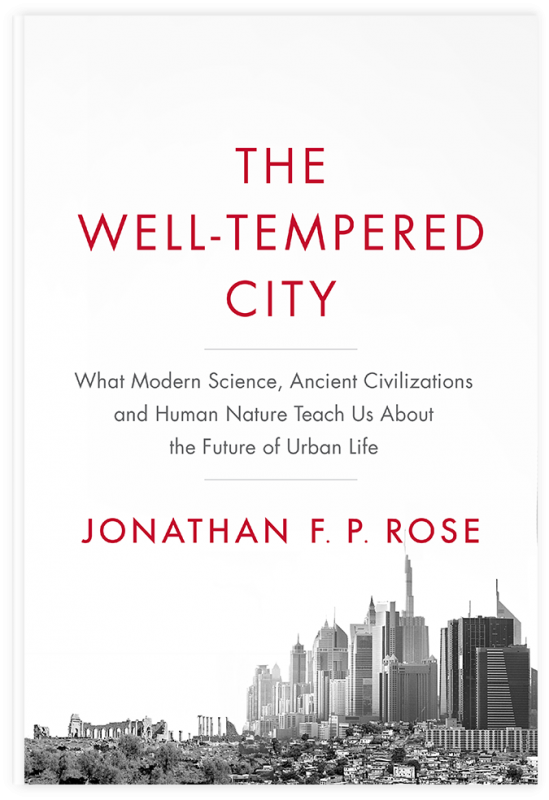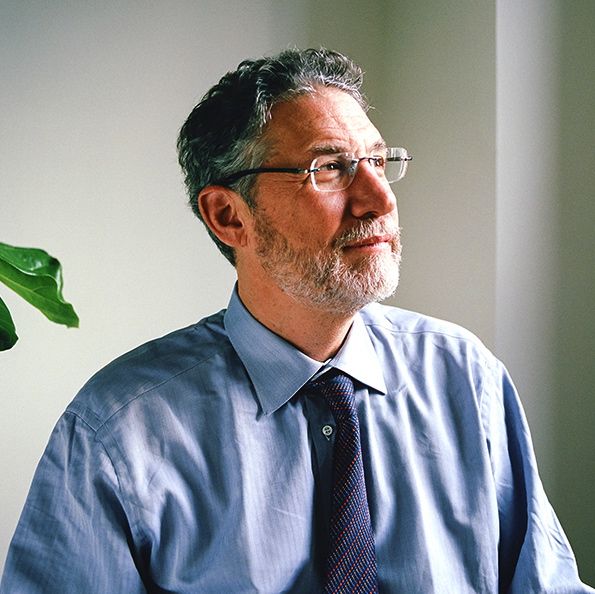How to 'Tune' a City
Published on by Dusko Balenovic, Previous Network Manager at The Water Network in Academic
Jonathan F. P. Rose’s new book proposes a way to adapt to the challenges human-built cities face: through harmony with nature.
 In his new book The Well-Tempered City, Jonathan F. P. Rose makes a creative effort to give some truly simple advice to mayors, urban leaders, and city-builders: work in harmony with nature.
In his new book The Well-Tempered City, Jonathan F. P. Rose makes a creative effort to give some truly simple advice to mayors, urban leaders, and city-builders: work in harmony with nature.
There’s an aphorism often attributed to the jazz bassist and band leader Charles Mingus: “Creativity is more than just being different. Anybody can plan weird; that's easy. What's hard is to be as simple as Bach .”
Rose uses Bach’s system for music theory to underpin his theory of cities and urban development. Ultimately, he uses this theory to recommend how to build more sustainable and resilient cities in light of challenges such as climate change, poverty and income inequality, and economic development.
Rose is an urban developer, combining his skill and family history in real estate development with a focus on building sustainable, affordable and green housing. He is a lover of music as well, the founder of a jazz recording company and a founding board member for Jazz at Lincoln Center.
City Lab's Interview with Jonathan F. P. Rose
Tell us what you mean by “the well-tempered city,” where the idea comes from, and why it is important for mayors, urbanists, developers, and cities toda y?
Johann Sebastian Bach composed The Well-Tempered Clavier to prove that a new system of tuning notes—tempering—should replace a system that had reigned for two thousand years. He composed it to align the highest human aspirations with the sublime harmony of nature. That is exactly what we need for our cities—a new operating system that can unleash cities to become more resilient, adaptive, and in balance with nature.
To understand cities, I had to go back to the beginning. The world’s first cities all grew from temples, often designed to reflect their maker’s view of the architecture of the universe, with that mission of aligning humans and nature. I chose the analogy of temperament as an allegory for this aspiration.
What are the key qualities of a well-tempered city?
 The first quality of urban temperament is coherence. Coherence starts with cities having a vision for what they want to become, with a plan and way to measure progress. Cities need to move from static plans made once every 20 years or so to dynamic, evolving plans.
The first quality of urban temperament is coherence. Coherence starts with cities having a vision for what they want to become, with a plan and way to measure progress. Cities need to move from static plans made once every 20 years or so to dynamic, evolving plans.
The second quality is circularity. Cities have metabolisms: energy, information, and materials flow through them. We need to integrate the metabolism of cities into cycles, the same way nature does. There won’t be enough water, food, or natural resources for all of us unless we shift from a linear system—where we use resources to make things and then discard them—to circular systems based on recycling.
The third quality is resilience, the ability to bounce forward when stressed, is key to cities’ ability to adapt. We can increase urban resilience with buildings that consume less energy and water and generate less waste. We can connect micro grids to share energy, heat, water, and information. We can weave nature back into cities with parks, gardens, and natural landscapes.
The fourth quality is community, the social networks made of well-tempered people. Happiness is not just an individual state; it is also collective. Vibrant social networks enhance our neighborhoods and improve well-being.
And finally the fifth quality is compassion. Great cities have a healthy balance between individual and collective well-being. Compassion is an adaptive capacity, providing the connective tissue between us, the gateway to wholeness for ourselves and for society.
Can you give us examples of some well-tempered cities, and some not-so well-tempered cities?
Every city has lessons to learn. There is no perfect city, but imagine a city with Singapore’s social housing, Florence’s Tuscan regional food system, Seattle’s access to nature, New York City’s arts and culture, Hong Kong’s subway system, Curitiba’s bus rapid transit system, Finland’s public education, Paris’s bike-share program, London’s congestion pricing, San Francisco’s recycling system, Philadelphia’s green storm-water program, Seoul’s Cheonggyecheon River restoration project, Austin’s smart grid, Windhoek’s wastewater recycling system, Rotterdam’s approach to living with rising seas, or Tokyo’s health outcomes.
Or imagine a place with the equality of Stockholm, the happiness of Sydney, the peacefulness of Reykjavík, the urban food production of Hanoi, the harmonic form of the Forbidden City, the market vitality of Casablanca, the cooperative industrialization of Bologna, the biking culture of Copenhagen, the innovation of Medellín, the universities of Cambridge and Boston, the hospitals of Cleveland, and the livability of Vancouver.
Each of these aspects of a well-tempered city exists today, and is continually improving. Each evolved in its own place and time, are adaptable and combinable. Put them together as interconnected systems and their metropolitan regions will evolve into happier, more prosperous, regenerative cities.
There is a shift in contemporary urbanism toward so-called “market urbanism.” The basic idea is that we can go a long way to solving problems like inequality and housing affordability by simply deregulating cities, loosening land use restrictions and enabling developers to build more housing. You’re a developer and you call for more, not less, planning. Why?
In the earliest cities in the world, city leaders understood that the forces of chaos need to be balanced by forces of control. This principle still holds. The issue is not too much regulation, it’s that planning, regulations, investments, and incentives are not being used as integrated tools.
Cities with thriving economies need more affordable and mixed-income housing to serve their growing populations. Affordable housing costs more to build then the people it serves can afford, and so its development must be subsidized, or incentivized by zoning bonuses.
Without inclusionary zoning, the market would fill these locations with the highest value housing they could build. Market forces will neither build new affordable housing in the places that have the most opportunity to thrive, nor will they bring well-being to struggling neighborhoods.
You mention the importance of the Islamic City. Can you tell us more about that?
I was intrigued by the rapid spread of Islam across much of the world. Founded in 622, in less than 100 years, Islam grew from a small band of followers to a territory ranging from Chinese Turkestan to Spain, from northern Africa to southern Iraq and Iran. How did it become so powerful?
The answer is that the Islam of its first 500 years offered the cities it captured economic and religious freedom that encouraged diversity and contributed to prosperity. Prior to Islam’s arrival, Jews and Christians were heavily taxed to finance wars between Byzantines and Persians. Once the Islamic caliphate conquered a city it reduced taxes, and encouraged free trade by taxing wealth, not income. Muhammad’s Constitution of Medina permitted Jews and Christians their own quarters ruled by their own laws, courts, and judges, and as a consequence they supported the spread of Islamic rule.
Islam replaced rigidity and chaos with a system that was flexible, adaptive, coherent, energized, and stable. Cities like Cordoba, in Spain, blossomed, enlivened by a mix of Christian, Jewish, and Islamic thought and tolerance. Islamic cities were the sites of some of the world’s earliest universities, and gave rise to significant contributions to the advancement of science and medicine. Core to the religion are the concepts of humility and compassion. This is the Islam most moderates aspire to.
There is much talk about smart cities, but you seem to favor the idea of resilient cities or dynamically balancing cities. What are the limits of smart cities and the advantages of resilient, dynamically balancing ones?
Dynamically balancing cities are cities that have a clear vision of what they want to become, and have identified the key physical, environmental, economic, social, and health indicators of that vision. They also have a strong command of the planning, regulatory, investment, and incentive tools to get there. The promising scientific and technological tools of smart cities can give us the ability assess current conditions to meet the needs of cities.
We talk all the time about building more infrastructure, but you place great emphasis on the natural infrastructure of cities. What do you mean by that?
Cities need ‘technical’ infrastructure—water and sewer systems, mass transit, airports, bridges and roads, water and sewer systems, data and energy systems etc.—but they also need green infrastructure. For example, neighborhoods with lots of street trees are cooler in the summer, the trees absorb storm water, taking pressure off the sewer systems. They absorb pollution. Neighborhoods with trees have lower mental health issues and higher real estate values. Weaving bio diverse networks of parks and gardens and restored river fronts through cities reduces infrastructure costs and increases well-being. The neighborhoods people most love are usually in tune with nature.
How can we govern and develop public policies to get us to a more inclusive and more broadly shared prosperity in the well-tempered city?
It begins with a strong, clear, shared vision as to what kind of community we want each of our cities to be. That has to be grounded in a non-sectarian form of morality that lies at the hearts of all of our religious traditions. We need to start with high aspirations.
Data shows that the equality, prosperity, and well-being of communities are deeply interdependent. But people are not influenced by data, they respond to the prevailing cultural ethos. Our national political leaders think that they benefit by exacerbating the issues that pull us apart. But in city after city, I have seen extraordinary leaders do amazing things by working for the common good. We need the values of our mayors, city councilors and planners to rise up and retake the national dialog.
Source: City Lab
Media
Taxonomy
- Infrastructure
- Integrated Infrastructure
- Sustainability
- landscape& urbanism professional practice
- Landscape & Urban Design
- Eco-City Development
- City
- Urban Design